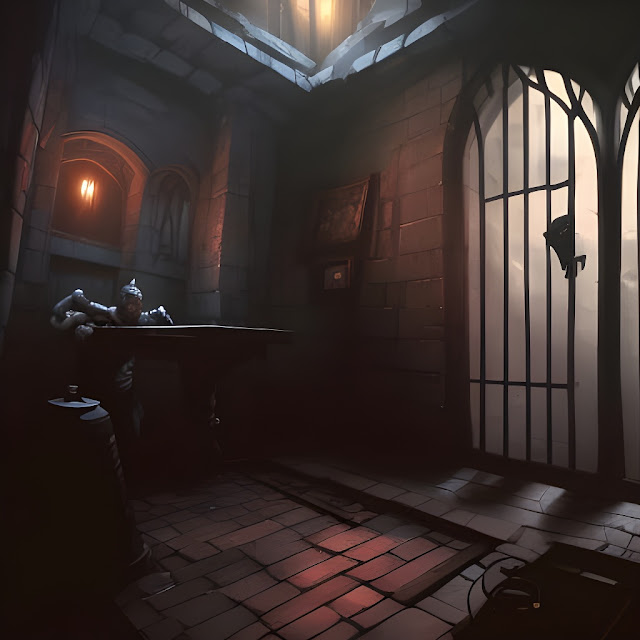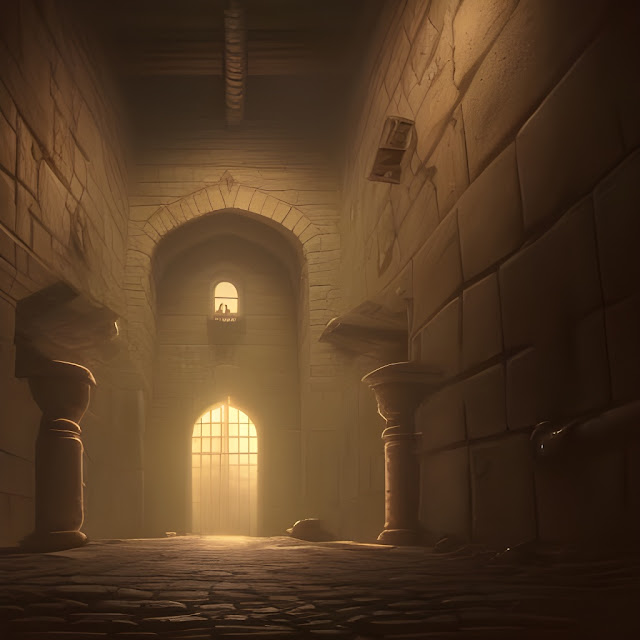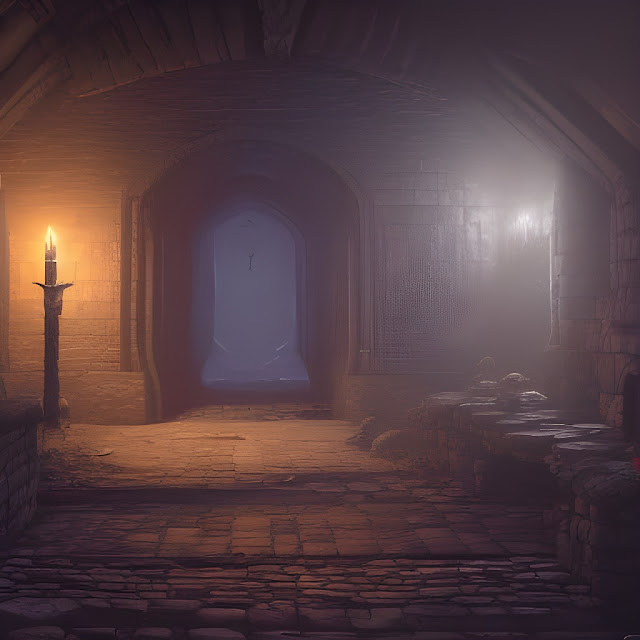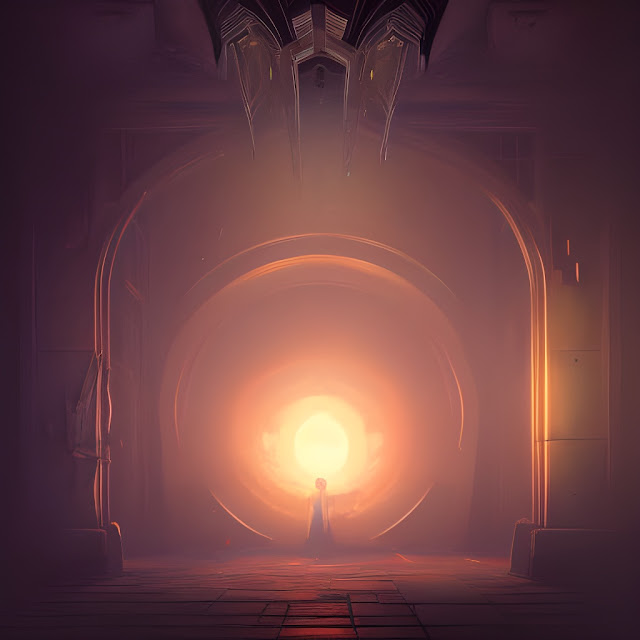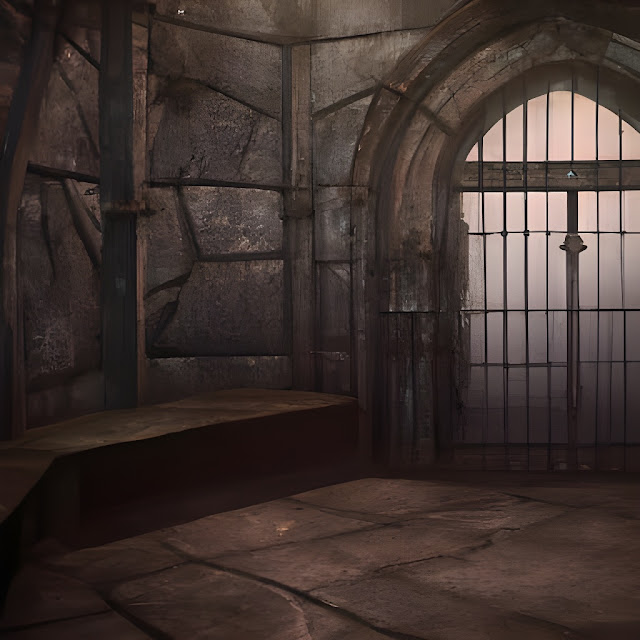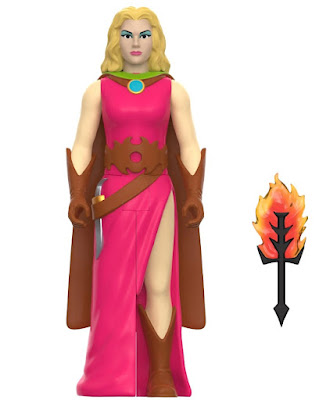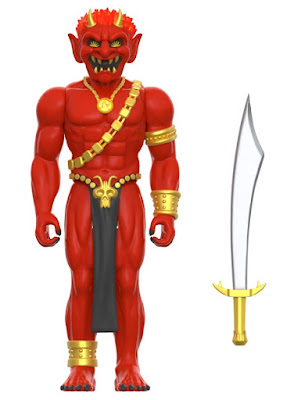 Hard City: Noir Roleplaying
Hard City: Noir Roleplaying is a roleplaying game which takes the player into the dark, dangerous world of high streets and long shadows, of uncertainty and ambiguity, of desperation and dedication, of beguilement and betrayal, of the lonely man who would seek the truth and the many who would hide it, where ultimately any resolution will end badly. This is the world of Film Noir and hardboiled fiction, both a genre and a style, best typified by films such as
The Maltese Falcon,
The Big Sleep, and
Double Indemnity, and the works of James M. Cain, Raymond Chandler, Dashiell Hammett, and Mickey Spillane. The heroes are always cynical, often as dangerous and damned as their enemies, who might employ lowlifes and punks, but they are invariably as clever, classy, and charming as they are callous. Some, like the classic femme fatale, is ultimately all of that, often at first demure and desirable, but eventually revealed to be cunning and selfish, ready to betray not just the hero, but her co-conspirators and fellow crooks too. These play out in a city of soaring skyscrapers, between the cracks where the light of what is right and just never seems to shine, even if the cracks run all the way to the highest office.
Hard City: Noir Roleplaying is published by
Osprey Games, best known for roleplaying games such as
Gran Meccanismo: Clockpunk Roleplaying in da Vinci’s Florence and
Jackals – Bronze Age Fantasy Roleplaying, and board games such as
Undaunted: Normandy. It enables the creation of Player Characters through trademarks rather than skills, enabling players to create classic archetypes of the genre, and combines this with light, dice pool mechanics designed to facilitate fast play and resolution in a grim, gritty city of America of the middle decades of the twentieth century. The result is a storytelling game in a classic genre, both black and white in its look and in the tales it tells.
A Player Character in
Hard City is defined by his Trademarks, Edges, Flaws, Drives, Ties, and Belongings. Trademarks are broad, thematic Tags which are the most obvious interesting thing about a Player Character; Edges are specialisations or advantages; Flaws are difficulties, passions, or disadvantages; and Drives are a Player Character’s motivations. A Player Character has three Trademarks, one from his Past, his Present, and his Perk, five Edges, two Flaws, a single Drive, and two Ties. The Edges are listed under the Trademarks, which also provide options for Flaws. Past Trademarks include Bureaucrat, Button Man, Grifter, and Newshound; Present Trademarks include Enforcer, Finder, Infiltrator, and Performer; and Perk Trademarks include Badge, Dirty Fighter, Femme Fatale, and Weasel. Drives can be Altruistic, Debt-related, and Selfish, and Ties can be with people and places, positive, and problematic, and ideally, they should be with other Player Characters. Lastly, a Player Character has Moxie and Grit, the former a Player Character’s luck and willpower, the latter his toughness and capacity to survive.
The creation process is a matter of making several choices and the choices do lend themselves to creating some classic characters from the genre. So, the Veteran, Investigator, and Brave Trademarks could model Sam Spade; Grifter, Charmer, and Femme Fatale for Brigid O’Shaughnessy; Criminal, Finder, and Weasel for Joel Cairo; and High Society, Leader, and Huge for Caspar Gutman. It is eased by a table of flaws and a table of names, the latter including a list of regular surnames and hardboiled surnames. So, for example, an ordinary name might be Audrey Lewin or Ronald Scott, but their hardboiled versions could be Audrey Shields or Ronald Hawk.
Eudoxia Lionidze
Trademarks
Past: High Society (Edges: Educated, Charm)
Present: Infiltrator (Edges: Break & Enter, Escape)
Perk: Femme Fatale (Edges: Cunning, Strong-willed)
Flaw: Lack of Trust, Irresponsible
Drive: Pay off my brother’s gambling debts
Ties: I don’t trust Anton Powell because he gambles too much; I’m pretty sure Burt Torres knows who killed Gladys Janes
Moxie: 3
Grit: 3
Mechanically,
Hard City uses a dice pool of six-sided dice, consisting of two sets of dice, Action Dice and Danger Dice, each in a different colour. To undertake an action, a player assembles the pool using Action Dice, starting with a single die, whilst the Game Master adds Danger Dice. Action Dice are drawn from a Player Character’s Trademark and an appropriate Edge, plus from any Tags from the Threat or Scene, Position, Belongings, and Help the Player Character might be receiving. Danger Dice come from Injuries and Conditions the Player Character is suffering, plus from any Tags from the Threat or Scene, Position, Belongings, and the Scale of the obstacle. Once the dice pool is assembled, the dice are rolled. Matches between the Action Dice and the Danger Dice are cancelled and the highest remaining Action Dice are counted. A six is a success, four or five a partial success, and three or less a failure. Extra results of six count as Boons and can have an Increased Effect of the success, Set Up an Ally with an extra success, can speed Extended Checks, and Add a Tag to a Scene or Threat. Botches occur when only results of one remain and can lead to Increased Danger, Inflict Serious Harm, and Extra Strikes in an Extended Check.
A Player Character also has Moxie. This can be spent to Demonstrate Expertise and add a second Trademark to a roll, gain A Little Luck to change a single die up or down by one result on both Action Dice or Danger Dice, Take a Breath to remove a Condition, or even details to a scene with a Voice-over. Moxie is refreshed when one of a Player Character’s Flaws comes into play and makes life complicated for everyone.
The outcome of a roll is to inflict Consequences which mean that a Player Character or NPC can suffer a cost or complication, a Tag can be added or removed, whether from the Player Character, Scene, or Threat, a Threat can be added or increased to a Scene, or Harm can be inflicted. Harm can be a Condition such as Angry, Dazed, or Dishevelled, or it can be an Injury of varying severity. All of these can be used to add Action Dice and Danger Dice to the dice pool, depending on the situation. When it comes to what a Player Character might be doing,
Hard City does not so much provide extra rules for how investigations, chases, interrogations, arguments, and fights work, as suggest how the rules apply and what the possible Consequences might be, whether to the Player Characters or the NPCs. When it comes to actions within a turn, any shooting and fighting is done last, talking and moving first, emphasising the hard talking and words have meaning nature of the genre.
Eudoxia Lionidze has been hired to retrieve some letters that the mobster, Carlo Garcia, is using to blackmail her client. She has already managed to get the letters by attending a party at Garcia’s house and climbing over the balcony into his study from the room next door. As she exits into the hallway, bottle of champagne and glass in hand, slightly dishevelled after clambering over the balcony, she is confronted by one of Garcia’s goons, asking what she is doing there. Eudoxia is going to have to bluff her way past, and with a grin, says, “Oh I am so sorry. I just needed to lie down. Get my head straight. Too much to drink…” Eudoxia’s player creates his pool of Action Dice by starting out with a single die and adds one for her High Society Trademark since she is dressed like she should be at the party, another for her Charm, and suggests that her appearance and Belongings would earn her another die. The Game Master agrees, means that Eudoxia’s player has four Action Dice to roll. The Game Master adds six Danger Dice to the pool, including one for Goon and another for his Condition, which is Suspicious. The player rolls the dice and gets a one, five, five and six on the Action Dice and three and five on the Danger Dice. The five on the Action Dice and the Danger Dice cancel each other out, which leaves the six from the Action Dice as the highest result, and means that the security goon believes Eudoxia, giving him the Trusting Condition. With a slight misstep of the slightly drunk, she makes her way back down to the party and her companion for the night. In terms of progression,
Hard City is about the School of Hard Knocks, and a Player Character can learn from his setbacks as much as he can his successes. Two many setbacks and a Player Character can begin the next case or investigation with lower Moxie or even a Condition even as the Player Character improves.
Hard City is set in 1946 in a large, nameless city, either by the sea or the bay. It could be Los Angeles, San Francisco, or Chicago, but its particulars are described in more than enough detail to be a playable space, covering a little of its history, its movers and shakers and troublemakers, crime, but paying particular attention to its districts, complete with Tags, place suggestions and possible story hooks.
For both the players and the Game Master, there is an introduction to the genre with a decent bibliography, whilst for the Game Master there is advice on running the various aspects of the roleplaying game. This does include avoiding the social attitudes of the period in which the genre is set, but in the main focuses on two types of Case—or scenario. These are investigations and capers, the former more complex than the latter, but the latter requiring more planning upon the Player Characters. There is also a discussion of MacGuffins and suggestions as to possible campaign frames, primarily investigative in nature, but all supported by a list of example films which exemplify their set-ups. Only the ’Wrong Time, Wrong Place’ campaign frame differs from this, which explores ordinary men and women getting caught up in bad situations, typified by
Double Indemnity and
The Postman Always Rings Twice. This is all accompanied by a Case Generator.
The advice itself focuses on the fiction and playing to it, and on making the most out of scenes. This includes ‘Enter Late, Exit Early’ and Raymond Chandler’s famous adage that, “When in doubt, have a man come through the door with a gun in his hand.” In modelling its genre, the framing of scenes in
Hard City is intended to be succinct, focused, and interesting. The players are meant to engage with this, bring their characters’ Drives and Flaws into play as much as their Trademarks, to make the lives of their characters if not difficult, then at the very least, interesting. Though ideally, difficult. As a consequence of this and the need for the players to embrace the various aspects of the genre,
Hard City does demand more of its players, that they roleplay hard in every scene their characters appear in. Rounding
Hard City is a pair of ready-to-play Cases—‘Engagement with Death’ is an investigation into the disappearance of a wealthy industrialist’s son, whilst ‘In at the Deep End’ is a caper in which the Player Characters must recover a piece of missing artwork. Both are classic Film Noir plots which nicely emulate the genre.
Physically,
Hard City is very nicely presented. The book is tidily laid out and quite easy to read, but the best feature is the artwork. Luis F. Sanz’s illustrations are excellent, really capturing the feel and tone of the genre with a wide cast of characters and varying situations. If there is anything missing from the book it is a handy rules reference at the end of the book.
Hard City: Noir Roleplaying is a roleplaying game in which the players need to play hard and talk hard in order to bring out the best and the worst of their characters. Thematically and mechanically, it keeps everything simple by focusing on the trademark aspects of the genre and encouraging the players to bring them into play. The result is an impressively presented and clearly written storytelling roleplaying game whose look and play is designed to emulate the desperate, dangerous, and morally ambiguous tales of the Film Noir and Hardboiled genres.
